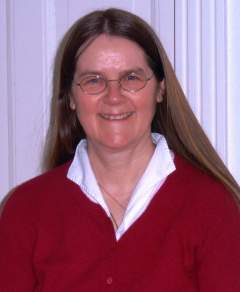Work Package 1: Temporal and spatial variability of biodiversity and functional traits of phyto- and zooplankton, benthos, fishes, and marine mammals in the North Sea related to environmental factors (e.g. hydrography, temperature, nutrients, fisheries)
WP1 will produce an inventory of the long-term changes in taxonomic biodiversity and functional traits for the diverse trophic groups (phytoplankton, zooplankton, benthos, fishes, marine mammals) on different spatial scales in the Southern North Sea.
This inventory will be created through integration of existing observational and model-derived datasets, which describe the marine communities of interest in the context of different environmental factors like warming temperatures and nutrient declines, as well as anthropogenic activities such as reduction of fishing effort. The data were collected in both national (e.g. German Small-scale Bottom Trawl Survey (GSBTS), German Autumn Survey in the Exclusive Economic Zone (GASEEZ), LTER North Sea Benthos Observatory, LTER Helgoland and Sylt Roads, marine mammal monitoring surveys) and international monitoring programmes (e.g. International Bottom Trawl Survey (IBTS), Small Cetacean Abundance in the North Sea (SCANS)).
We will integrate these long-running data series in order to analyse and compare long-term changes in biodiversity and traits on different spatial scales in relation to various environmental factors (HZG-Habitats Atlas), like for example temperature increase, extreme events, water mass dynamics, nutrient decrease as well as direct human activities (e.g. alterations in fishing pressure). For the purpose of these analyses, the data will be combined in such a way that they allow for hypothesis testing with regard to shifting top-down and bottom-up processes in the food web.
Work Package 2: Modelling the food web
In WP2, we will make use of spatially explicit, mass-balanced food web models of the Ecopath family in order to model the effects of changes in biodiversity, abundance, and spatial distribution of species, as induced by anthropogenic influences (e.g. fisheries) and environmental changes (e.g. nutrients, temperature, water mass dynamics). The model will be adapted to represent biological characteristics on different trophic levels.
By running simulations, we will improve our understanding of the processes triggering the historically observed shifts within the food web in time and space. Furthermore, they will allow for projections of future changes in the North Sea food web structure, trophic energy transfer as well as ecosystem services such as fishing yield. In developing these modelling approaches, BioWeb will provide information required for sustainable management of human activities, including the definition and accomplishment of a Good Environmental Status (GES) as set out in the EU Marine Strategy Framework Directive.
Work Package 3: Transfer
In WP3, we will communicate our results to local and regional stakeholders from coastal communities along the German North Sea by organizing focus group workshops. Specifically, we will elucidate our projections on changes in biological diversity and their ramifications for the food web, and relate these to availability of biological resources. Stakeholders addressed in these workshops include representatives from local fishing communities, aquaculture, trade, tourism, local organizations, politics and administration.
The focus groups will provide feedback to the project concerning economic and social consequences of the developed scenario’s on local actors and communities as well as their adaptation capacities. The outcomes of the focus group discussions will not only sketch realistic pictures of the expectable economic and social ramifications (e.g. profitability of businesses, employment) for directly affected sectors like fisheries and aquaculture, but also unveil farther-reaching consequences for coastal communities, with respect to e.g. tourism and trade.
By means of a case study, one focus of WP3 will be laid on the recovery of grey seal populations in the Wadden Sea and on Helgoland, which is perceived as being in direct conflict with human activities at sea (e.g. fishing). The apparent disputes between piscivorous seals and fisheries are rooted in a) a lack of consideration regarding the complexity of predator-prey interactions and their top-down regulating effects and b) a lack of insight into other factors that influence the food web. These aspects will be subjected in BioWeb and elucidated to local actors in a comprehensible manner.














